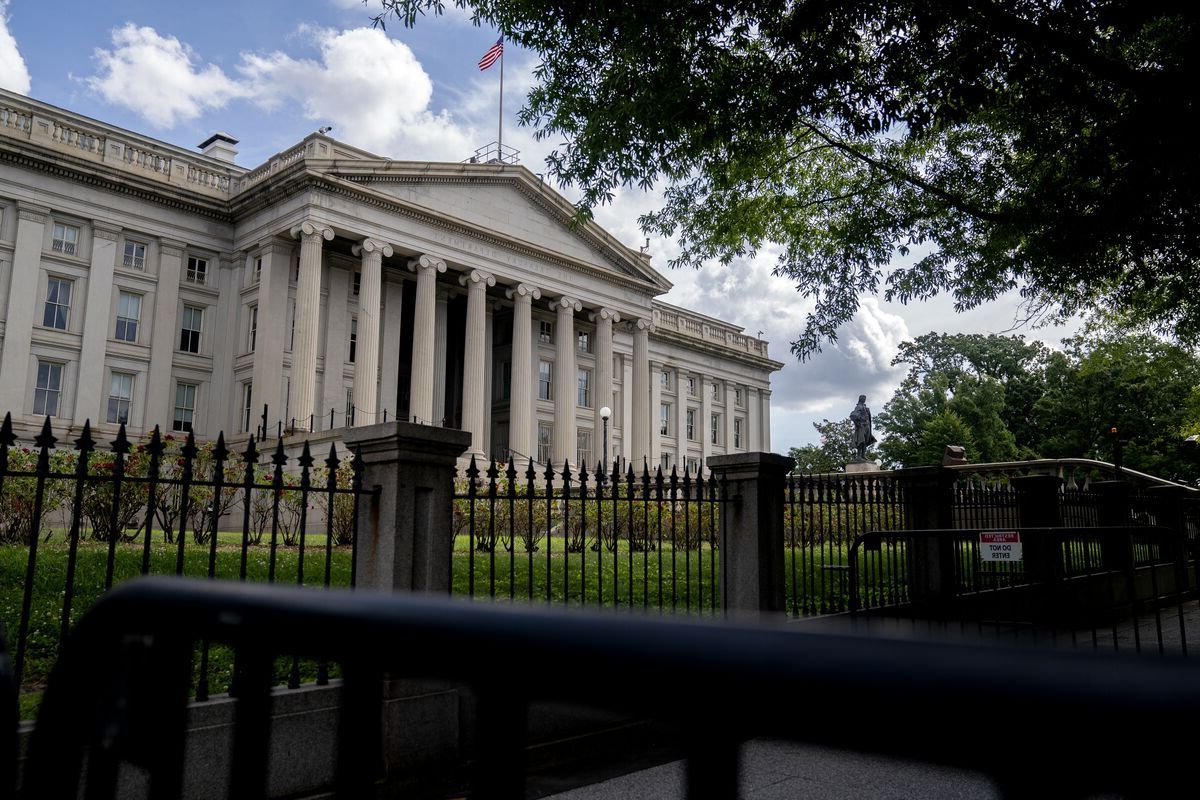Treasury’s Cash Balancing Act: The U.S. Treasury’s cash balancing act has become a topic of significant interest, particularly with the projected $750 billion in cash by March. This substantial amount raises questions about the Treasury’s strategic approach to managing its cash flow and the potential implications for the broader financial landscape.
As we delve into the intricacies of this balancing act, it is essential to analyze the factors driving this accumulation of cash, the potential impact on borrowing costs, and the implications for future government debt activity.
By examining market responses, quarterly borrowing estimates, and analyst projections, we can gain a deeper understanding of the Treasury’s cash management strategy and its implications for investors and the economy at large.
Key Takeaways
- The U.S. Treasury is projected to have $750 billion in cash by March, driven by increased net fiscal flows and the Treasury’s cash balance assumption.
- The Treasury’s borrowing projections for the first quarter have been revised, anticipating a reduction of $55 billion, highlighting efforts to minimize the amount of new debt issued.
- The market responded to the Treasury’s revised borrowing projections, with the benchmark U.S. 10-year Treasury yield dropping to a one-week low of 4.059%.
- Analysts anticipate increases in auction sizes in the near term, with funding requirements projected to rise gradually over the coming years.
Also Read: 10-Year Treasury Yield in 2023: Navigating Peaks, Valleys, and Year-End Stability
U.S. Treasury Borrowing Projections: First Quarter Outlook
The U.S. Treasury’s borrowing projections for the first quarter of the year have been revised, anticipating a reduction of $55 billion from the previous estimate. This adjustment highlights the Treasury’s efforts to strike a balance between meeting the government’s financial needs and minimizing the amount of new debt issued.
With a projected borrowing amount of $760 billion, the Treasury aims to ensure sufficient liquidity to cover its obligations while managing the risk of overborrowing. Factors contributing to the revised projection include increased net fiscal flows and a higher cash balance assumption.
Market Response to Treasury Announcement: Yield Impact
Following the U.S. Treasury’s revised borrowing projections for the first quarter, the market responded with a noticeable impact on the benchmark U.S. 10-year Treasury yield, which dropped to a one-week low of 4.059%. This demonstrates the market’s sensitivity to the Treasury’s borrowing plans and its subsequent effect on yields.
The market closely watches refinancing estimates and short-term changes in bill supply, as these factors can significantly influence the yield curve. The drop in the 10-year Treasury yield indicates that investors are adjusting their expectations in response to the Treasury’s cash balancing act. This reaction reflects the market’s perception of the Treasury’s ability to manage its cash flow and meet its borrowing needs.
As the Treasury continues to navigate its cash balancing act, market participants will closely monitor its impact on yields and adjust their investment strategies accordingly.
- The Treasury’s revised borrowing projections have prompted a noticeable drop in the benchmark U.S. 10-year Treasury yield.
- The market’s sensitivity to refinancing estimates and short-term changes in bill supply is evident.
- Investors are adjusting their expectations in response to the Treasury’s cash balancing act.
- The market’s reaction reflects its perception of the Treasury’s ability to manage its cash flow and meet its borrowing needs.
Quarterly Borrowing Estimates: Second Quarter Forecast
The Treasury’s second quarter forecast for borrowing estimates includes a projected cash balance of $750 billion at the end of June. This projection indicates the Treasury’s intention to maintain a significant cash reserve, providing a cushion for future needs and ensuring the smooth functioning of the government’s financial operations.
The borrowing estimate for the second quarter is set at $202 billion, suggesting the Treasury’s anticipation of increased funding requirements during this period. It is crucial for the Treasury to carefully manage its borrowing activities to meet the government’s financial obligations while minimizing the impact on interest rates and the overall economy.
Treasury’s Fourth Quarter Debt Activity: Recap
Continuing with the Treasury’s financial activities, the recap of the fourth quarter debt activity highlights the Treasury’s borrowing of $776 billion in net marketable debt, in line with October’s estimates. This borrowing spree indicates the government’s need for capital to fund its operations and fulfill its obligations.
The fourth quarter concluded on a positive note, with a cash balance of $769 billion, surpassing the October forecast by $19 billion. This surplus indicates the Treasury’s ability to effectively manage its cash flows and ensure sufficient liquidity for its operations. It also reflects the confidence of investors in the government’s ability to meet its financial obligations.
Overall, the fourth quarter debt activity demonstrates the Treasury’s commitment to maintaining a stable financial position and supporting the nation’s economic growth.
- The Treasury borrowed $776 billion in net marketable debt.
- The cash balance at the end of the quarter was $769 billion, surpassing the October forecast by $19 billion.
- The borrowing indicates the government’s need for capital to fund its operations.
- The surplus cash balance reflects the Treasury’s effective management of cash flows and investor confidence.
Market Speculation and Analyst Projections: Future Auctions
With uncertainties surrounding potential increases in auction sizes, market speculation and analyst projections shed light on the future of Treasury auctions. Analysts anticipate a final quarter of nominal coupon auction size increases and project funding requirements to rise gradually over the coming years. This projection aligns with the Treasury’s efforts to balance its cash position by March 2022. To provide a clearer view of the future auction landscape, the following table presents the projected auction sizes for the next three quarters:
| Quarter | Nominal Coupon Auction Size (in billions) |
|---|---|
| Q4 2021 | $300 |
| Q1 2022 | $350 |
| Q2 2022 | $400 |
These figures suggest that the Treasury will continue to increase auction sizes in the near term. However, it is important to note that these projections are subject to change based on evolving market conditions and the government’s funding needs. Nonetheless, they provide valuable insights for investors and market participants to anticipate the future supply of Treasury securities.
Conclusion Of Treasury’s Cash Balancing Act
The U.S. Treasury’s cash balancing act of projecting $750 billion by March is a significant undertaking.
The market response to this announcement has had an impact on yields, and the treasury’s borrowing estimates for the second quarter are eagerly anticipated.
The fourth quarter debt activity has been summarized, and market speculation and analyst projections for future auctions are being closely watched.
This ongoing financial balancing act is crucial for maintaining stability in the economy.




